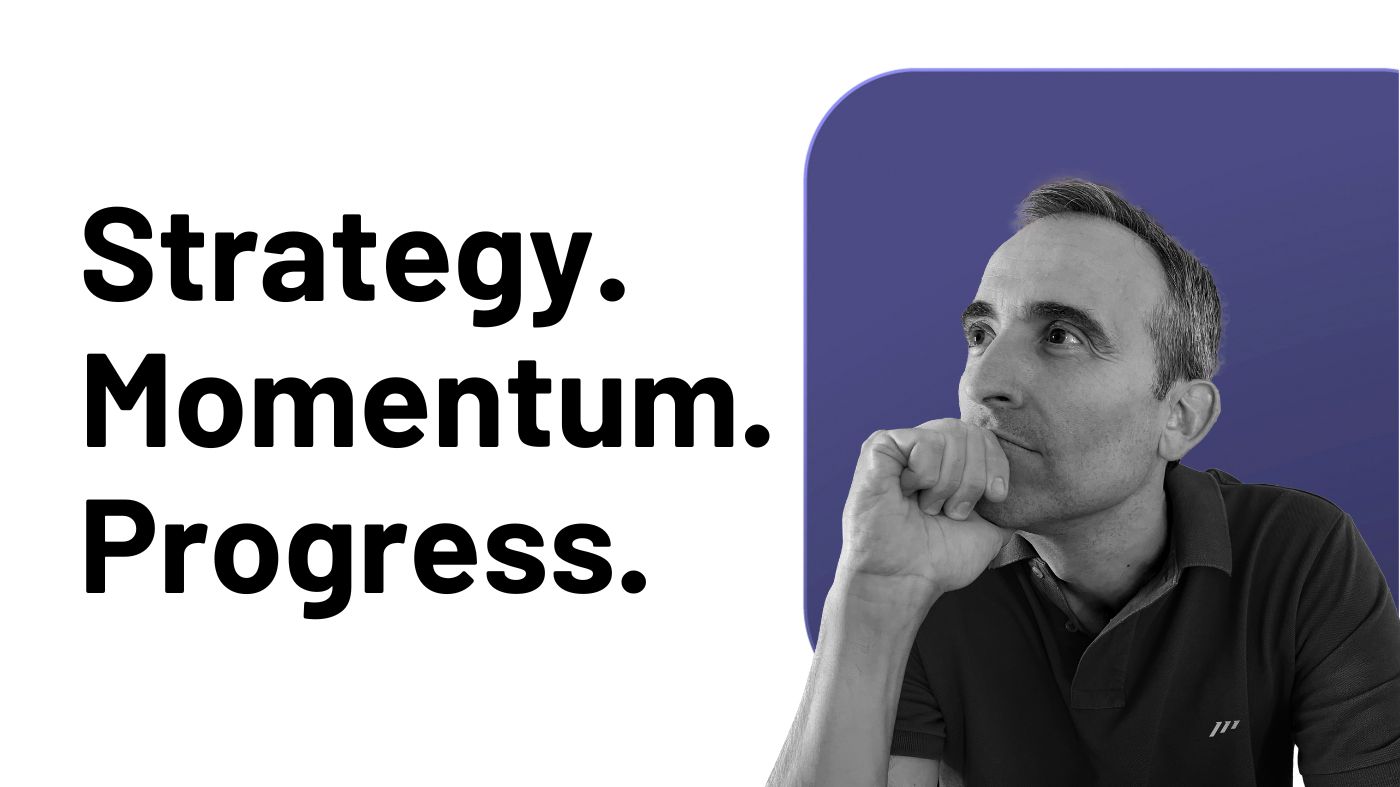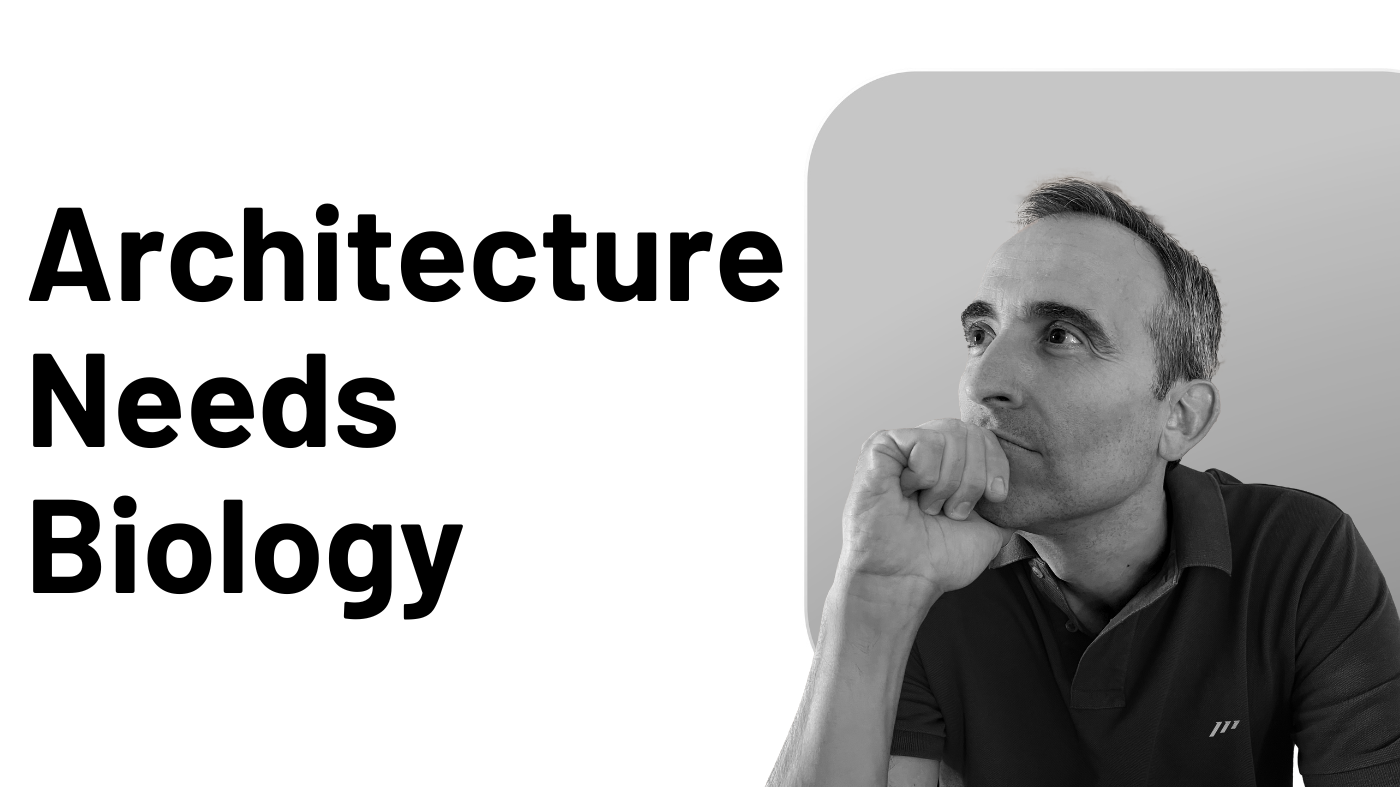After managing hundreds of projects across multiple companies, I’ve discovered that every project manager, regardless of industry or experience level, shares two fundamental frustrations that define our daily struggle.
Dream #1: Having an instant, strategic overview of what’s happening across all your projects without drowning in task-level details or constantly interrupting your team.
This isn’t about micromanaging individual tasks. It’s about maintaining that crucial 30,000-foot view that lets you spot potential roadblocks, identify dependencies, and keep projects aligned with your strategic goals, all without getting lost in the granular weeds.
Dream #2: A system that forces you to constantly ask and answer the most critical question in project management: “What’s the next action that will move this project forward?”
This question is pure gold.
It prevents projects from stalling, ensures continuous momentum, and guarantees you’re always progressing toward completion and goal achievement.
For me, juggling four companies simultaneously with a complex personal life, these aren’t nice-to-haves. They’re survival requirements.
Traditional project management approaches of endless meetings and status check-ins simply don’t scale.
Here’s what changed everything: Linear doesn’t just offer features that address these dreams. They’ve fundamentally and successfully implemented how project management should work.
Through their innovative project structure combined with their Pulse feature, they’ve created a project management system that delivers both strategic oversight and forward momentum automatically.
Why Linear Isn’t Just Another Pretty Face (Though It Is Pretty)
When I first encountered Linear, I was immediately struck by its sleek interface.
But make no mistake: Linear’s beauty isn’t merely skin-deep.
While most project management tools mistake aesthetic polish for genuine usability, Linear delivers both without compromise.
What truly sets Linear apart is how its design philosophy directly addresses those two fundamental project manager dreams I mentioned earlier.
The clean, minimalist interface isn’t just pleasing to the eye; it’s purposefully crafted to reduce cognitive load.
By eliminating unnecessary distractions, Linear keeps you focused on what truly matters:
-
The strategic overview of your projects, and
-
The next actions that will move them forward.
The keyboard-first approach is perhaps the most tangible example of Linear’s brilliance.
In a world of endless clicking and menu navigation, Linear embraces speed through keyboard commands.
This isn’t just a feature but a paradigm shift in how project managers interact with their tools.
Every action becomes accessible without leaving the keyboard, transforming project management from a tedious exercise into a fluid, almost intuitive experience.
When you need that crucial 30,000-foot view I mentioned before, you can summon it instantly with a keystroke rather than hunting through multiple menus.
For those familiar with the ICOR® methodology we’ve developed at the Paperless Movement®, Linear’s alignment is nothing short of remarkable.
It seamlessly integrates with these principles, allowing busy professionals to implement their productivity systems end to end with minimal setup time.
The structural framework of Linear naturally guides you toward asking “what’s the next action?”, that golden question that keeps projects constantly moving forward.
At its core, Linear embodies what project managers truly need: raw pragmatism.
It’s fast, powerful, and ruthlessly practical.
There’s no fluff, no unnecessary features, just pure project management muscle that helps you deliver results without burning out.
In a profession where time is precious and mental bandwidth even more so, Linear’s approach is refreshingly honest. It acknowledges that your job isn’t to manage a tool but to deliver outcomes.
This pragmatic approach is why Linear has become indispensable for me while juggling four companies simultaneously.
It delivers a comprehensive project management solution that goes far beyond just strategic overviews.
Linear creates an ecosystem where visibility and action exist in perfect harmony, where complex dependencies become clear, and where team communication flows naturally alongside your tasks.
It’s a project management tool that scales with your ambition, maintains clarity even as projects grow complex, and consistently drives momentum through every phase of execution.
How Linear Rewires Your Brain for Strategic Thinking
The moment you start using Linear, something transformative happens to your approach to project management.
It’s subtle at first, almost imperceptible, but within days you’ll notice a fundamental shift in how you conceptualize and tackle projects.
This isn’t just about adapting to new software; it’s about Linear actively rewiring your brain for strategic thinking.
Traditional project management tools often trap us in a reactive cycle: we respond to issues as they arise, we chase status updates, and we scramble to identify blockers after they’ve already impacted timelines.
It’s exhausting and inefficient, leaving little mental bandwidth for the strategic thinking that actually moves projects forward.
Linear breaks this cycle by forcing better project conceptualization from the start.
Its structure doesn’t allow for the vague, poorly defined projects that plague so many teams.
Instead, the platform gently guides you toward clarity, requiring you to articulate specific goals (initiatives), define concrete cycles, and establish clear ownership.
This isn’t just organizational busywork; it’s a cognitive framework that transforms how you approach project management.
The brilliance of Linear’s approach is that it makes strategic thinking the path of least resistance (something I’ve fought for decades!).
When creating a new project, the platform’s intuitive structure encourages you to consider everything, from stakeholders to potential roadblocks upfront, thanks to its clear and clean GUI/UX, not as an afterthought.
This proactive mindset becomes second nature, eventually extending beyond the platform to influence how you approach challenges in every aspect of your work.
“Vision without execution is hallucination.” — Thomas Edison
Perhaps the most powerful mental shift comes from Linear’s ability to move you beyond reactive management.
The platform’s elegant visualization of project status and team capacity creates a natural forward momentum.
Rather than constantly putting out fires, you find yourself anticipating needs, identifying opportunities, and making decisions based on a comprehensive understanding of your project landscape.
This shift from reactive to proactive thinking (a core principle in ICOR®) compounds over time.
Team members begin anticipating issues before they become problems.
Conversations evolve from “What went wrong?” to “What comes next?”
The mental energy previously consumed by status tracking and issue management gets redirected toward innovation and improvement.
For busy professionals juggling multiple responsibilities, this cognitive transformation is nothing short of revolutionary.
Linear doesn’t just help you manage projects more efficiently; it fundamentally changes how you think about them. And that mental shift, from reactive firefighting to strategic leadership, is what ultimately separates exceptional project managers from the merely competent.
Meet Pulse: The Feature That Changes Everything
While Linear’s core platform already revolutionizes project management, there’s one feature that truly elevates it to indispensable status: Pulse.
This isn’t just another feature bolted onto an already robust platform; it’s the beating heart of what makes Linear uniquely powerful for busy professionals.
At its most basic level, Pulse is Linear’s solution to the perpetual challenge of maintaining real-time visibility across projects without drowning in details.
But describing Pulse so simply would be like calling the internet “a way to send messages”; technically accurate but missing the transformative impact.
Pulse functions as your project’s nervous system, continuously monitoring activity, intelligently filtering signal from noise, and delivering precisely the information you need exactly when you need it.
Unlike traditional dashboards that require you to actively seek out information, Pulse proactively brings critical updates to your attention while filtering out distractions.
What makes this even more remarkable is how Linear demonstrates what exceptional AI implementation looks like in professional software.
There are no prompts to write, no technical jargon to navigate, no “AI features” to learn.
The intelligence works completely behind the scenes, transparent to the end user, delivering only useful outcomes that help you perform at your best.
This is how AI should be integrated into productivity tools: invisible, intelligent, and invaluable.
“Technology is best when it brings people together.” — Matt Mullenweg
The real magic of Pulse also lies in its ability to deliver real-time “What’s going on?” visibility without creating information overload. It presents a curated stream of updates that focuses exclusively on what matters most to you and your team. This isn’t just convenient; it’s the key to maintaining that crucial 30,000-foot strategic view I mentioned earlier.
When a team member completes a key task, when a deadline approaches, or when a project milestone is reached, Pulse ensures you’re aware without requiring you to chase down updates. The psychological impact of this cannot be overstated: you gain the confidence that comes from knowing nothing important will slip through the cracks, freeing your mental bandwidth for higher-level thinking.
Most impressively, Pulse achieves this without becoming yet another inbox to manage. Its intelligent filtering means you’re never overwhelmed with notifications, just presented with actionable insights that keep projects moving forward. This represents a fundamental shift from information management to strategic oversight.
For someone like me juggling multiple companies simultaneously, Pulse has become my trusted co-pilot.
It allows me to maintain comprehensive awareness across diverse projects without the constant context-switching that typically makes such broad oversight impossible.
I can instantly zoom from high-level project status to granular details and back again, all while maintaining perfect clarity about what needs my attention next.
This seamless flow between strategic oversight and tactical execution is Pulse’s greatest gift to busy professionals and, especially, project managers.
It bridges the gap between those two project manager dreams, knowing what’s happening and knowing what comes next, creating a unified experience that feels less like using software and more like gaining a superpower.
The Death of Status Meetings: How Pulse Transforms Team Dynamics
While the personal productivity benefits of Pulse are substantial, its most revolutionary impact becomes apparent when you zoom out to the team level.
Put simply, Pulse transforms how teams communicate, collaborate, and move projects forward in ways that traditional project management tools can only dream of.
Perhaps the most immediate and welcome change is the death of status meetings.
We’ve all endured them: those soul-crushing weekly agenda sessions where team members take turns reciting what they’ve been working on, what’s next, and what’s blocking them.
They’re inefficient, interrupt Deep Work, and rarely surface the information that actually matters.
With Pulse, these meetings become obsolete overnight.
When everyone has continuous visibility into what’s happening across projects, those tedious update rounds disappear.
Instead, team meetings can focus exclusively on strategic decisions, creative problem-solving, and forward-looking planning.
The time savings alone are substantial, but the quality improvement in your remaining meetings is where the true value emerges.
“Meetings should be like salt—sprinkled carefully and only when needed.” — Jason Fried
What makes this possible is Linear’s ability to foster an automated documentation culture.
Unlike traditional systems where documentation is an afterthought or additional burden, Linear makes documentation an effortless byproduct of normal work.
Every task update, status change, and milestone completion is automatically captured, contextualized, and shared with those who need to know.
This automated approach to documentation solves one of the most persistent challenges in project management: keeping everyone informed without creating extra work.
Team members no longer need to write separate status reports or update multiple systems. The act of doing their work in Linear creates a comprehensive, real-time record that’s accessible to anyone who needs it.
This creates an almost magical sense of flow, where projects seem to advance themselves with minimal management overhead.
The cumulative effect of these features is a fundamental shift in team dynamics:
-
Communication becomes asynchronous yet responsive.
-
Work happens in parallel without confusion.
-
Everyone stays informed without information overload.
-
And, most importantly, your team spends more time doing meaningful work and less time talking about work they’re going to do.
Why This Matters More Than You Think
While Linear and its Pulse feature may initially seem like just another productivity tool in an already crowded market, the implications run far deeper than most project managers realize.
What we’re really talking about is a fundamental shift in how knowledge work gets done.
Those two dreams I mentioned at the beginning, strategic oversight and forward momentum, aren’t just nice-to-haves. They represent the core challenges that have plagued project management since its inception, challenges that traditional approaches have consistently failed to solve.
By addressing these challenges head-on, Linear isn’t just making project management more efficient; it’s redefining what’s possible.
When you no longer have to choose between the big picture and the next action, when you can simultaneously maintain strategic oversight and tactical momentum, you unlock a new level of organizational capability.
“You can’t do a good job if your job is all you do.” — Katie Thurmes
For individual project managers, this means less stress, more impact, and greater career advancement.
The mental bandwidth formerly consumed by status tracking and coordination can now be directed toward the kind of strategic thinking that truly drives value.
Your ability to consistently deliver results despite complexity becomes your professional superpower.
For teams, the transformation is equally profound.
When communication happens in context, when documentation is automatic, and when next steps are clear, collaboration friction plummets.
Teams naturally align around shared goals and maintain momentum without constant managerial intervention. The result is not just better project outcomes but a more engaged, autonomous, and effective team culture.
For organizations, the implications are perhaps most significant of all.
In a business environment where adaptability and execution speed determine success, Linear provides a substantial competitive advantage.
Organizations that adopt these approaches can respond more quickly to market changes, deliver more consistently on strategic initiatives, and maintain clarity even as they scale.
Whether you’re managing a small team or juggling multiple companies like me, Linear’s approach to project management represents one of those rare step-changes in productivity that can transform not just how you work but what you’re capable of achieving.
In a world of incremental productivity improvements, that’s something truly worth getting excited about.




